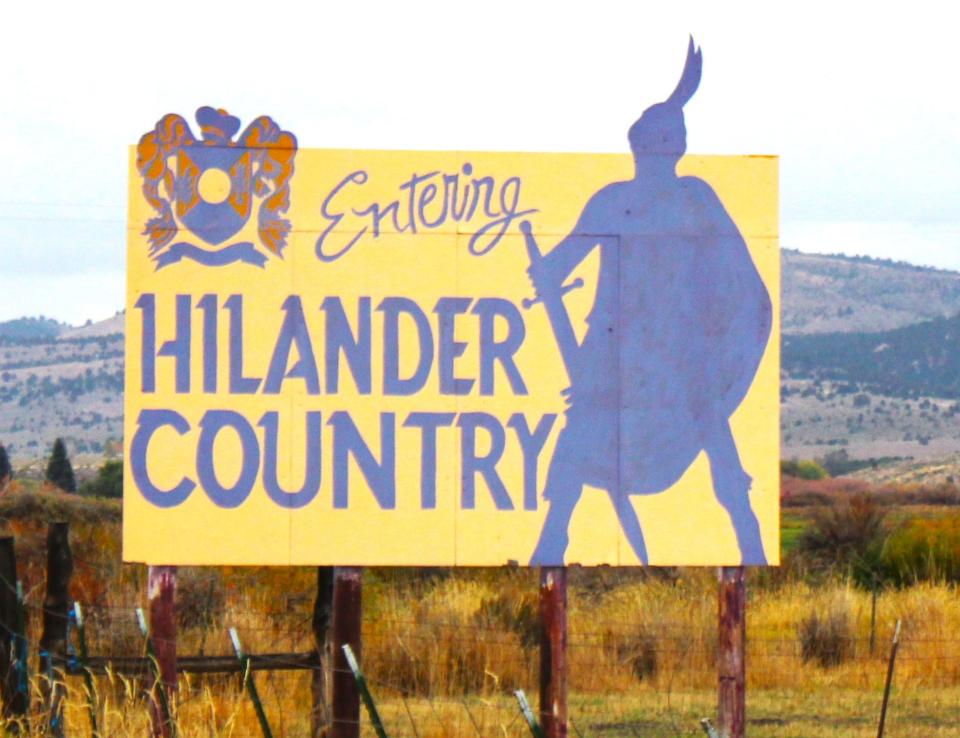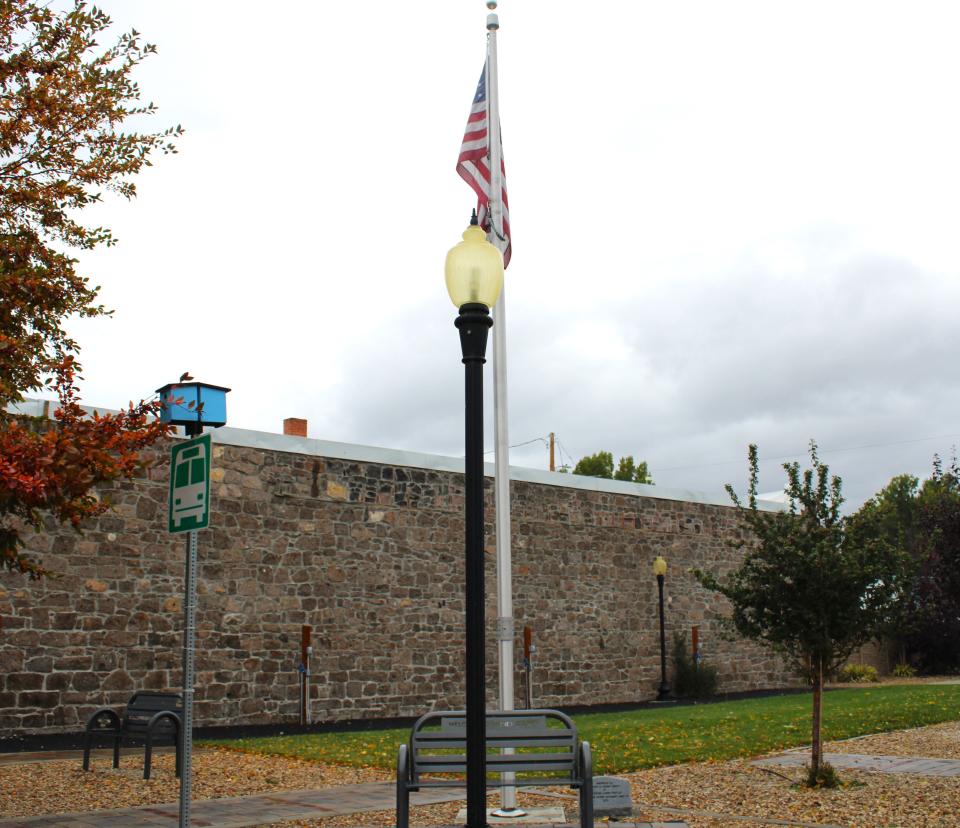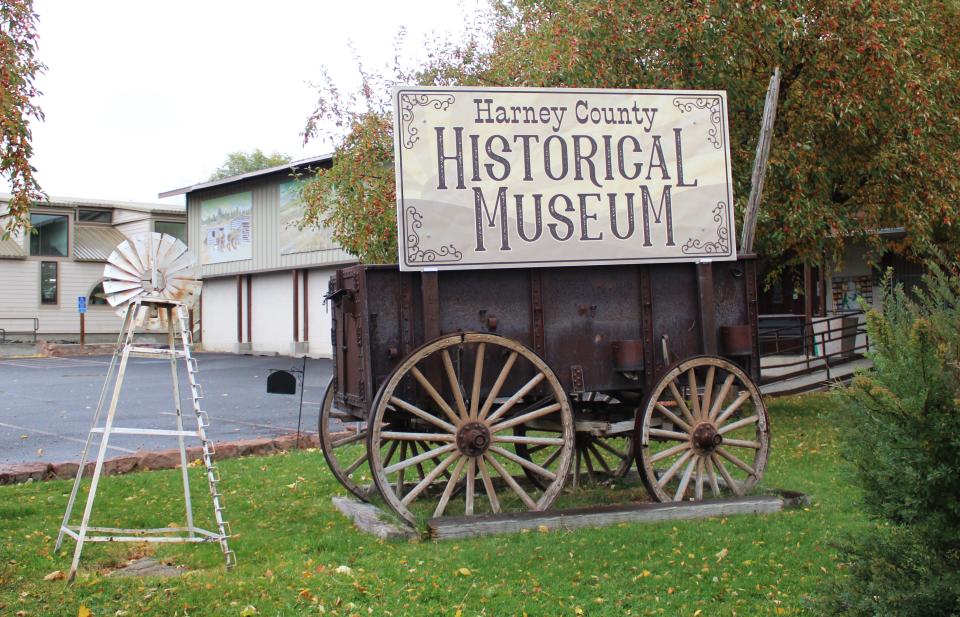We met at the Sand Bar Cocktail Lounge in Bullhead City
- Oops!Something went wrong.Please try again later.
I looked across the tabletop and knew this guy was a true journalist. He’s written for Harper’s Magazine Vanity Fair, covering stories of the murders of farmers in South Africa and the troubles with the IRA in Ireland.
I was very impressed with James Pogue. A young man, though anyone younger than 90 is young to me, who gets out there and does complex reporting. Me? I am a travel writer who interviews folks when the mood hits and often may embellish a bit about the locales I find myself in.
His book, "Chosen Country: A Rebellion in the West," truly intrigued me. What first intrigued me was that Pogue had gotten a hold of me to see if he could interview me about a top-secret he was working on. I pried, but he would not tell me - that was okay. I’d nearly been arrested near Area 51.
We met at the Sand Bar Cocktail Lounge in Bullhead City. Where else do writers meet?
It was to be a short meeting - he had things to do, and I had nothing to do. Four hours later, I realized that my next destination was a trip to Burns, Oregon.
Laureen questioned my logic; she was good at that. “Burns? Never heard of it.”
“You’ve never heard of George Burns?”
The roll of her eyes and long sigh could have been mistaken for the big one everyone expects along the San Andreas fault.

Standoff with Clive Bundy
It turns out that Burns is where Pogue spent a substantial amount of time interviewing everyone, including reluctant squirrels and Sasquatch, about the 2014 armed standoff between Clive Bundy and law enforcement concerning a 21-year-long legal battle about allowing cattle to graze upon government land.
I do not offer political opinions in my columns, but this one made me scratch my head. The government\'s land?
The Bureau of Land Management (BLM) wanted Bundy to pay over one million buckaroonies for grazing cattle on government land after he had paid taxes for the cattle he had sold during those years to the government.
Clive said no, and then all heck broke out with supporters of Bundy, as well as some of his relatives, and they took over an area on federal land at the Oregon National Wildlife Refuge, about 32 miles from Burns.
The small town of Burns suddenly became the magnet for national and international news agencies to congregate.
It isn't apparent with all the legal mumbo-jumbo, but this is where Pogue found himself for an extended stay - read his book, and you will learn all about the inner workings of this saga of the modern West.
“Dude, the whole episode was like independent folks against the MAN,” someone may have told me if I had taken the time to interview anyone during my short stay.
Named after famous Scottish poet Robert Burns
Driving into Burns, I was greeted by a large sign that read, ‘Entering Highlander Country’ with an image of a guy with a sword wearing a kilt. To this day, I cannot discover why it is spelled Hilander and not Highlander. But the small town of just over 2,800 souls was named after the Scottish Poet Robert Burns, a favorite of an early settler named George McGowan.
“Aye, that Burns fella can write a dandy Brythonic verse like no other,” McGowan may have said.
Burns is located in Harney County of southeast Oregon and is considered to be in the high desert.
Well, I had just left the High Desert of Southern California a couple of weeks prior, packing mainly shorts to wear, but as I pulled into Burns, it was cold and raining.
“We usually wear long pants when it is raining,” a man told me as I went to a restaurant for lunch.
“I have a raincoat,” I replied.
“Looks smart with those shorts.”

Prehistoric times in Burns
The Burns area has a beautiful and rich history concerning early human habitation. Brainy archeologists believe that humans have inhabited the area for nearly 10,000 years. Hunters and gatherers called the Wadatika band of the modern-day Paiutes used to occupy this area, which covered almost 5,300 square miles.
That is a lot of miles that reach nearly to modern-day Boise, Idaho.
The Wadatika got their name from the wada seeds they collected for nourishment by the shores of Malheur Lake.
The wada seed belongs to the Suaeda calceoliformis, a flowering plant in the family of Amaranthaceae. I have no idea what that means and am very confused, but the early natives of this part of Oregon seemed to enjoy them.
Soon, like many other parts of the southwest, settlers started to move in and develop farming and ranching empires. The native peoples were then ushered onto reservations to make way for ‘progress.’
“We’re not stealing your land,” a mustachioed man may have said while twirling each end of the hair on his face. “We are simply looking after you.”
In 1889, the area was split into two counties, Harney and Grant - Burns ended up in Harney County.
It was a growing town and, by 1891, had a post office, multiple stores, hotels, and other assorted businesses needed for an up-and-coming place.
McGowan, who named the town, was the first postmaster.

A wet, chilly walk through downtown Burns
After lunch, I wandered downtown and truly loved the history staring at me at each step, except for the pouring rain. It was chilly, and I looked like someone who does not read weather predictions - shorts, Skechers slip-ons, and a dark raincoat.
Traveling is like that. Expect the unexpected, but be ready when the unexpected does happen. I recall a time in France when the weather was predicted to be cold and wet. Laureen and I packed for such and learned as we landed at Charles de Gaulle Airport that an unexpected heat wave had just entered.
Laureen smiled, and three new suitcases later, we were ready to wander the City of Light in a summery fashion.
“J’adore les vêtements neufs.” Laureen stated.
But, viewing the buildings, the style of how each street was laid out made the weather suddenly unimportant.
Burns is a very colorful place, not only for the residents but also for the structures themselves. Yellow, red, and white painted stores lined North Broadway Avenue, the main street running through downtown. Brick, stucco, and wood were used where needed but very stylishly - nothing hodgepodge about Burns. The entire business district had a pleasant, downhome, and welcoming feeling.
Even with the rain, I wandered here and there and found myself at the visitor’s center, a good place for visitors to see themselves occasionally.
The amiable young woman manning the welcome center explained that Burns is a beautiful place for families and individuals to tour.
“We have so much to offer,” she stated. I then explained the numerous hiking activities that abound in the nearby Steens Mountains, the Malheur National Wildlife Refuge, or perhaps I’d like the solitude of the Alvord Desert.
I’d heard of the Alvord Desert - a vast land between the Coast Range and the Cascade Mountains. Rumor has it that during the summer, a person can listen to the ground drying out from the more than seven inches of rain that settle there during the winter. The sounds are like sonic booms, or so I read.

“The desert is a great place to drive,” she told me. “Speed records have been set there in the past.”
In fact, in 2019, Jessi Combs drove her jet-powered vehicle to over 522 miles per hour to break the previous speed record set by Kitty O’Neil in 1976, who went the same route at 512 miles per hour. Unfortunately, during Combs\' drive, the front wheel collapsed, causing a terrible accident with the loss of Combs\' life.
“We may be a small town, but we have a big heart, large open lands to enjoy, and an inviting nature for locals and visitors alike,” she finished.
I wandered over to the Harney County Library, housed within a beautiful wooden structure that reminded me of something from the Old West.
Visitors are welcome in Burns
It was a warm environment that seemed to beckon travelers and citizens alike. Room after room had books covering every topic, but what intrigued me most were the black and white photographs depicting the rise of this small town from the beginning.
Men, women, and children stared into the camera\'s lens, believing it was just an ordinary day capturing an ordinary moment on a piece of film.
These folks may no longer walk the streets of Burns, but their presence in this small village in southeastern Oregon will always be cherished for their tenacity in building a vibrant community out of the once wild west.
Information
www.visiteasternoregon.com/poi/burns/
John can be contacted at - beyersbyways@gmail.com
This article originally appeared on Visalia Times-Delta: We met at the Sand Bar Cocktail Lounge in Bullhead City

